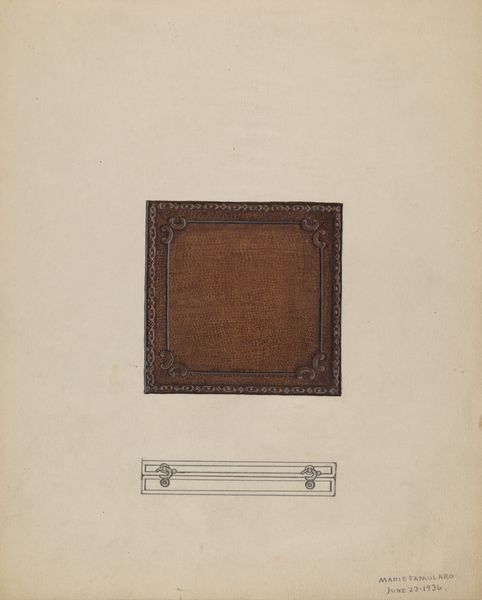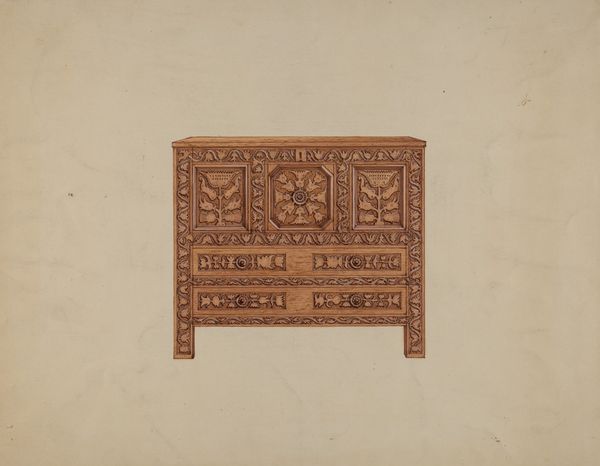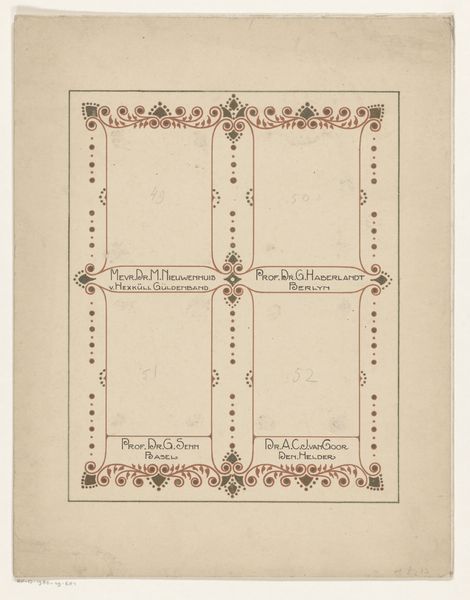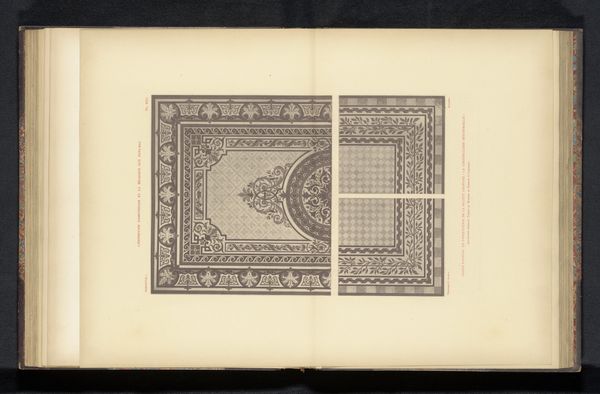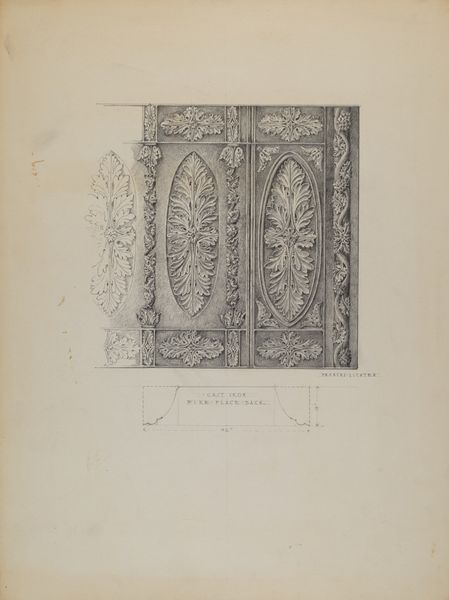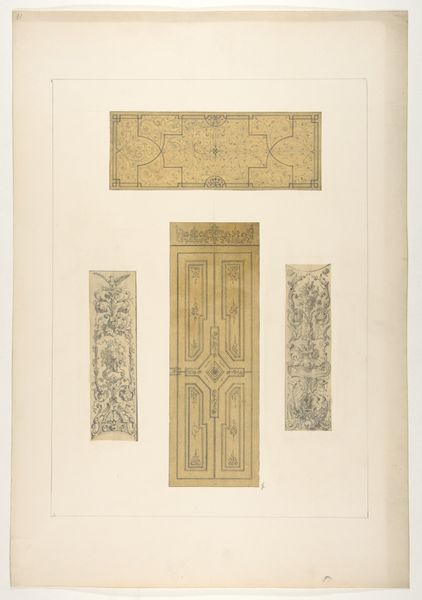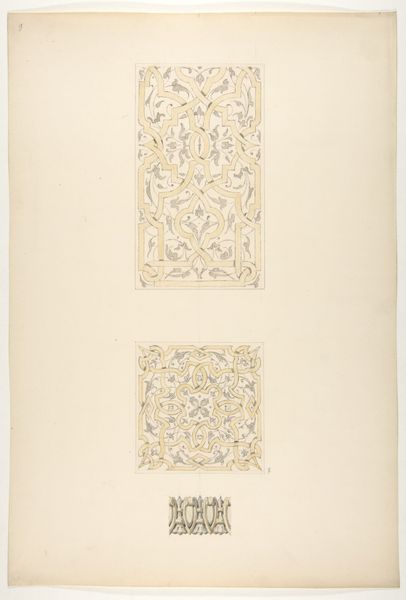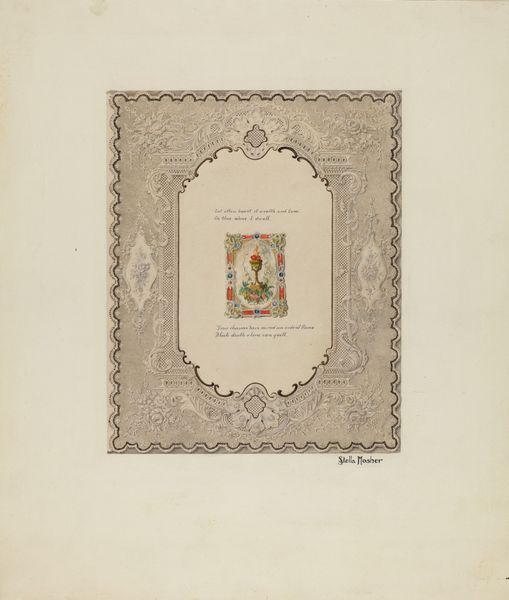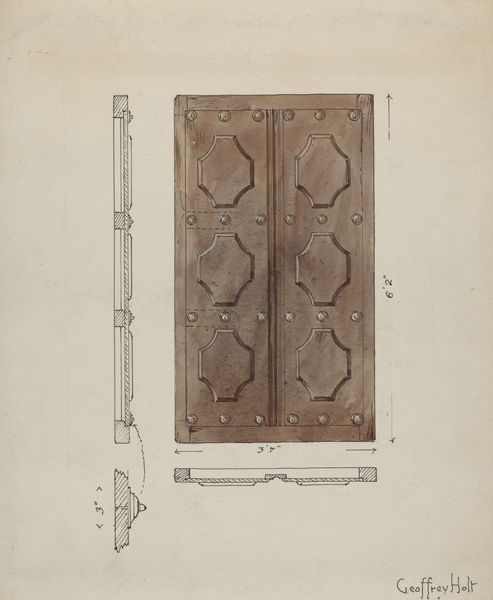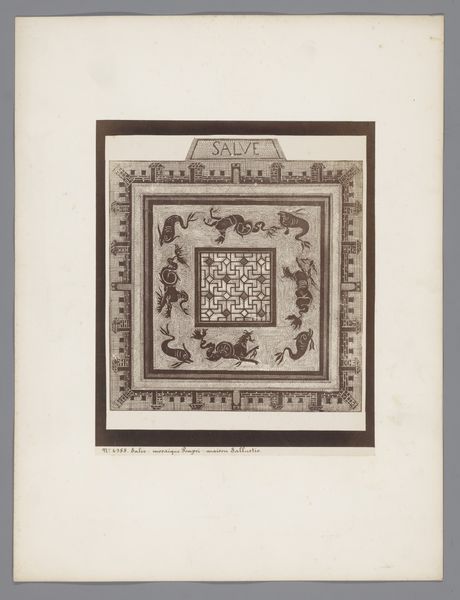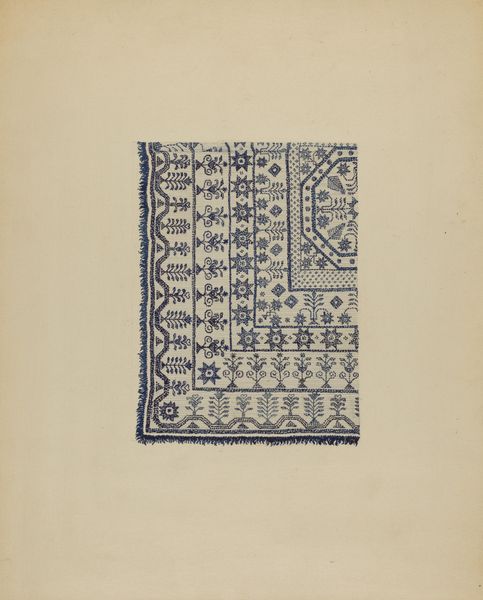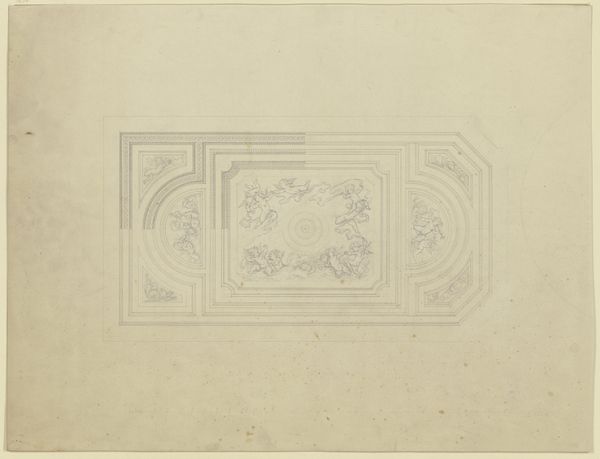
drawing, paper, pencil
#
drawing
#
paper
#
pencil
#
decorative-art
Dimensions: overall: 28.1 x 22.9 cm (11 1/16 x 9 in.) Original IAD Object: 4 6/8" high; 3 3/4" wide
Copyright: National Gallery of Art: CC0 1.0
Editor: So, here we have Marie Famularo's "Portrait Case," created sometime between 1935 and 1942. It’s a pencil drawing on paper and reminds me of a detailed architectural rendering. It’s incredibly ornate. How do you interpret this work and its potential place in decorative art history? Curator: Considering its creation during the Depression era, it prompts reflection on the social context of art production. Was this intended for mass production or for an elite market, especially during a time of economic hardship? Editor: That's a great point. It definitely seems more detailed and high-end than mass-produced goods of that era. So, who might have commissioned or acquired such a piece? Curator: The drawing’s style and the meticulous rendering suggest it could have been intended for a wealthy client interested in handcrafted objects. However, drawings such as this might have been proposed designs which never went into full production due to economic factors, pointing to a gap between artistic ambition and socio-economic realities. Consider how access to art materials and patronage were skewed during that time. Editor: It's fascinating to consider the piece in relation to larger socio-economic forces. Are there ways it challenged or reinforced the social hierarchies of the time? Curator: That's precisely the critical question! Art and design don't exist in a vacuum. Objects like this potential "Portrait Case" either directly or indirectly comment on society's structures of power and aspiration. By analyzing the stylistic choices, such as the vase of flowers which could denote themes of wealth, privilege and home, we may be able to tease out social messaging. Editor: It really adds a whole other layer to how I view it. I always considered style and decorum separately, and not as commentaries on their contemporary settings. Thank you! Curator: Precisely, recognizing art's engagement with history and cultural forces transforms the viewing experience.
Comments
No comments
Be the first to comment and join the conversation on the ultimate creative platform.
